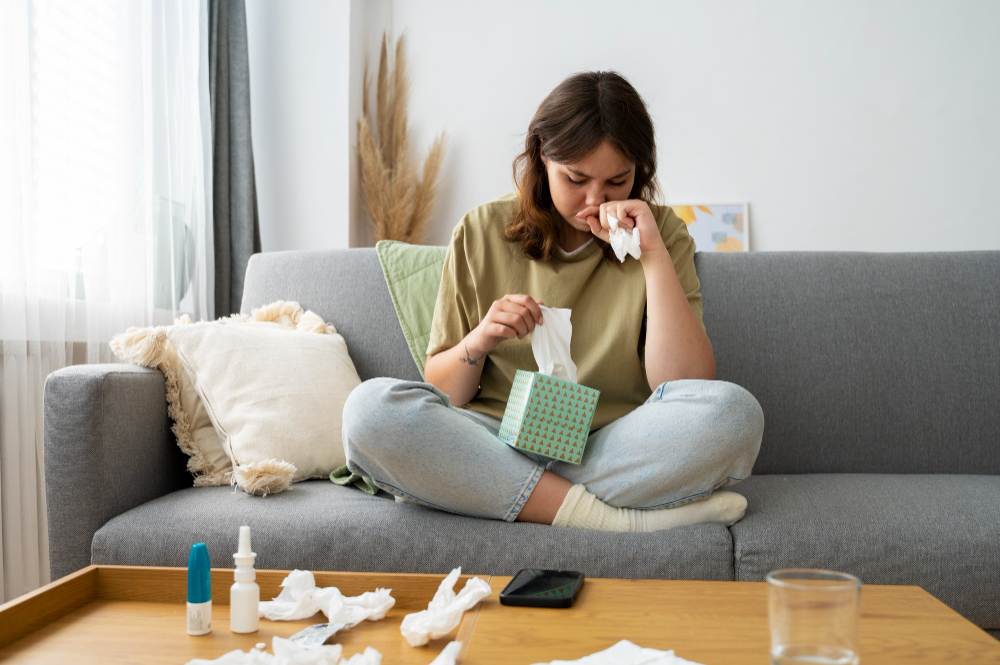Are you suddenly experiencing allergies within the comfort of your own home? If so, you’re not alone. Many people find themselves perplexed as to why they are suddenly allergic to their house. In this article, we will explore the possible causes, symptoms, and remedies for these sudden house allergies.
First and foremost, it’s important to understand the symptoms of house allergies. These can include sneezing, itching, watery eyes, congestion, and even skin rashes. If you are experiencing any of these symptoms within your house, it’s crucial to identify the underlying cause.
There are several potential culprits for house allergies. Common allergens found in houses include dust mites, pet dander, mold, and pollen. These allergens can trigger allergic reactions and cause discomfort. Additionally, certain materials used in houses, such as paint, cleaning products, fabrics, and building materials, can also cause allergic reactions in some individuals.
To alleviate your symptoms and find relief from your sudden house allergies, there are several remedies you can try. These may include reducing allergens in your home by regularly cleaning and vacuuming, using air purifiers, and maintaining good indoor air quality. It may also be helpful to identify and eliminate specific allergens or materials that are triggering your allergies.

In conclusion, sudden allergies to your house can be a frustrating and uncomfortable experience. By understanding the causes, symptoms, and remedies for these allergies, you can take steps to alleviate your symptoms and create a more comfortable living environment. So, if you’re wondering why you’re suddenly allergic to your house, read on to discover possible solutions and find relief.
Why Is Your House Suddenly Allergic?
One possible reason for sudden house allergies is poor indoor air quality.
Indoor Air Pollution: A Hidden Culprit
Indoor air pollution can be caused by various factors such as dust, pet dander, mold, and chemicals from cleaning products. These pollutants can trigger allergic reactions and worsen existing allergies.
Another factor to consider is
Poor Ventilation and Humidity Levels
. Insufficient airflow and high humidity can create an ideal environment for allergens to thrive. Without proper ventilation, allergens can accumulate and circulate in your home, leading to allergic symptoms.
Additionally,
Old or Damaged Building Materials
could be contributing to your sudden house allergies. Materials such as carpets, upholstery, and insulation can harbor allergens over time, and if they are damaged or deteriorated, they can release these allergens into the air.
Identifying the cause of your sudden house allergies is crucial in finding a solution. By addressing indoor air quality, improving ventilation, and replacing or repairing damaged materials, you can minimize allergens in your home and create a more allergy-friendly environment.
How To Fix Sudden House Allergies
Suffering from sudden house allergies can be frustrating, but there are steps you can take to alleviate the symptoms and create a healthier living environment.
Identify the Allergens
To effectively address your allergies, it is crucial to identify the specific allergens triggering your symptoms. Common culprits include dust mites, pet dander, mold, and pollen.
Clean and Ventilate
Regularly cleaning your home is essential in reducing allergens. Vacuum carpets and upholstery, dust surfaces, and wash bedding frequently. Additionally, proper ventilation can help eliminate allergens by circulating fresh air throughout your home.
Eliminate Moisture and Mold
Moisture and mold can be major triggers for allergies. Ensure that your home is properly ventilated, fix any leaks, and use a dehumidifier if necessary. Remove any visible mold and consider professional mold remediation if the problem persists.
Consider Air Purifiers
Investing in a high-quality air purifier can significantly improve indoor air quality by capturing and removing allergens from the air. Look for purifiers with HEPA filters for optimal results.
By following these steps, you can effectively address sudden house allergies and create a healthier, more comfortable living space.
Common Reasons Why Your House Triggers Allergies
Allergies can be a frustrating and uncomfortable experience, especially when they are triggered by your own home. There are several common reasons why your house may suddenly start causing allergies.
Poor indoor air quality
One possible reason for your allergic reactions could be poor indoor air quality. Dust, pet dander, and mold spores can accumulate in your home and circulate through the air, causing allergies to flare up.
Unseen allergens
Another reason for sudden house allergies could be the presence of unseen allergens. These can include dust mites, which thrive in mattresses, pillows, and upholstery, as well as cockroach droppings and pollen that may be brought in from outside.
Chemical irritants
Chemical irritants, such as cleaning products, air fresheners, and certain household materials, can also trigger allergies. These substances release volatile organic compounds (VOCs) into the air, which can cause respiratory symptoms and skin irritation.
Understanding the common reasons behind house allergies is the first step towards finding a solution. By identifying and eliminating these allergens, you can create a healthier and more comfortable living environment for yourself and your family.
What Should I Do About My Allergic House?
If you find yourself dealing with sudden house allergies, it’s important to take action to alleviate your symptoms and create a healthier living environment.
First, identify the common reasons why your house triggers allergies. This could include factors such as dust mites, pet dander, mold, or pollen.
Next, consider implementing some strategies to fix these sudden allergies. One option is to regularly clean and vacuum your home to reduce dust and allergens. You can also invest in air purifiers or filters to improve indoor air quality.
Additionally, it’s crucial to identify and eliminate specific house allergens. This might involve removing carpets or rugs, keeping pets out of certain areas, or addressing any mold or moisture issues.
By minimizing your exposure to allergens and taking proactive steps to create a healthier home environment, you can effectively manage and reduce your allergic reactions.
How To Identify and Eliminate House Allergens
Identifying Common House Allergens
To effectively eliminate house allergens, it is crucial to first identify the culprits. Dust mites, pet dander, mold, and pollen are some of the most common allergens found in homes. Dust mites thrive in bedding, carpets, and upholstery, while pet dander can be found on furniture and in the air. Mold tends to grow in damp areas such as bathrooms and basements, while pollen can enter the house through open windows and on clothing.
Eliminating House Allergens
Once the allergens are identified, it is important to take action to eliminate them. Regular cleaning and vacuuming can help remove dust mites and pet dander. Keeping humidity levels low and fixing any leaks can prevent mold growth. Installing air purifiers and using high-efficiency filters can help remove pollen from the air. Additionally, washing bedding and curtains frequently and keeping pets out of bedrooms can further reduce allergen exposure.
What Are the Most Common House Allergens?
House allergens are substances that can cause allergic reactions in individuals who are sensitive to them. They can be found in various areas of the home, including the air, furniture, carpets, and bedding. The most common house allergens include dust mites, pet dander, mold spores, and pollen.
Dust mites are tiny creatures that thrive in warm and humid environments. They feed on dead skin cells and their waste particles can trigger allergies. Pet dander refers to the flakes of skin, saliva, and urine from animals such as cats and dogs. These allergens can become airborne and cause allergic reactions when inhaled.
Mold spores are microscopic fungi that can grow in damp and poorly ventilated areas of the house. When disturbed, they can release spores into the air, which can trigger allergies. Pollen is another common allergen, especially during certain seasons when plants release their pollen into the air.
To minimize exposure to these allergens, it is important to keep the house clean, well-ventilated, and free of moisture. Regular vacuuming, dusting, and washing of bedding can help remove allergens. Using air purifiers and keeping pets out of certain areas of the house can also be beneficial.
How To Minimize Allergies to House Materials
One effective way to minimize allergies to house materials is by regularly cleaning and dusting your home. Dust mites and pet dander are common allergens that can accumulate on surfaces and in carpets, so it is important to vacuum and dust frequently. Additionally, using allergen-proof covers on mattresses and pillows can help prevent exposure to dust mites.
Another strategy is to choose hypoallergenic materials when furnishing your home. Opt for furniture made with natural fabrics and avoid materials that can release harmful chemicals, such as formaldehyde, which can trigger allergies.
Proper ventilation is also crucial in reducing allergens in your home. Opening windows to allow fresh air to circulate can help remove allergens and improve indoor air quality. Using air purifiers with HEPA filters can also be beneficial in capturing and removing allergens from the air.
By implementing these strategies, you can minimize allergies to house materials and create a healthier living environment for yourself and your family.










